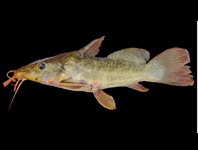Abstract
Aphaenogaster gamagumayaa sp. nov., a new troglobiotic (true cave-dwelling) ant species, from a limestone cave on the island of Okinawa (Okinawa-jima), Ryukyu Archipelago, Japan is described. This is the first discovery of a troglobiotic ant in Japan and the second verified record worldwide. This species has only been found in a cave area with heavy guano deposits, and some worker ants were observed carrying guano. The evidence for categorizing this new species as troglobiont is discussed.
References
Antweb (2018) Available from: https://www.antweb.org/browse.do?genus=nylanderia&species=myops&rank=species&projec t=allantwebants (accessed 20 May 2018)
Borowiec, L. & Salata, S. (2014) Review of Mediterranean members of the Aphaenogaster cecconii group (Hymenoptera: Formicidae), with description of four new species. Zootaxa, 3861 (1), 40–60.
https://doi.org/10.11646/zootaxa.3861.1.2Christiansen, KA. (1965) Behavior and form in the evolution of cave Collembola. Evolution, 19, 529–537.
https://doi.org/10.1111/j.1558-5646.1965.tb03328.xCulver, D. (1982) Cave life, evolution and ecology. Harvard University Press, Cambridge, 189 pp.
https://doi.org/10.4159/harvard.9780674330214Deharveng, L. & Bedos, A. (2000) The cave fauna of southeast Asia. Origin, evolution and ecology. In: Wilkens, H., Culver, D.C. & Humphreys, W.F. (Eds.), Ecosystems of the world. Vol 30. Subterranean ecosystems. Elsevier, Amsterdam, pp. 603–632.
Japanese Ant Database Group (2008) Japanese Ant Database 2008. Available from: http://ant.miyakyo-u.ac.jp/J/index.html (accessed 4 July 2018)
Juan, C., Guzik, M.T., Jaume, D. & Cooper, S.J. (2010) Evolution in caves: Darwin's 'wrecks of ancient life' in the molecular era. Molecular Ecology, 19, 3865–3880.
https://doi.org/10.1111/j.1365-294X.2010.04759.xMachida, H. & Kawana, T., Nagaoka, S., Ota, Y. & Moriwaki, H. (2001) Japanese Geology. Vol. 7. Kyushu and Nansei Islands. Tokyo University Press, Tokyo, 355, pp.
Maeda, K. & Tamura, H., Fujita, Y., Nakamura, Y., Sasaki, T., Kameda, Y. & Fukuda, H. (2017) Threatened wildlife in Okinawa. Animals. Department of Environmental Affairs Okinawa Prefectural Government. 3rd Edition. Red Data, Okinawa, pp.100 + 303 + 309 + 402 + 419 + 500.
Marques, AC. & Gnaspini, P. (2001) The problem of characters susceptible to parallel evolution in phylogenetic reconstructions: suggestion of a practical method and its application to cave animals. Cladistics, 17, 371–381.
https://doi.org/10.1111/j.1096-0031.2001.tb00131.xRoncin, E. & Deharveng, L. (2003) Leptogenys khammouanensis sp. nov. (Hymenoptera: Formicidae). A possible troglobitic species of Laos, with a discussion on cave ants. Zoological Science, Tokyo, 20, 919–924.
https://doi.org/10.2108/zsj.20.919Terayama, M., Kubota, S. & Eguchi, K. (2014) Encyclopedia of Japanese Ants. Gakken, Tokyo, 278 pp. [in Japanese]
Tinaut, A. & López, F. (2001) Ants and caves: sociability and ecological constraints (Hymenoptera, Formicidae). Sociobiology, 37, 651– 659.
Vandel, A. (1964) Biospéologie. La biologie des animaux cavernicoles. Gauthier Villars, Paris.
Wheeler, W. M. (1938) Ants from the caves of Yucatan, pp. 251-255. In: Pearse, A. S., Fauna of the caves of Yucatan. Carnegie Institution of Washington Publication, 491, 10150304.
Wilson, EO. (1962) The trinidad cave ant Erebomyrma (= Spelaeomyrmex) urichi (Wheeler), with a comment on cavernicolous ants in general. Psyche, 69, 62–72.
https://doi.org/10.1155/1962/54863

